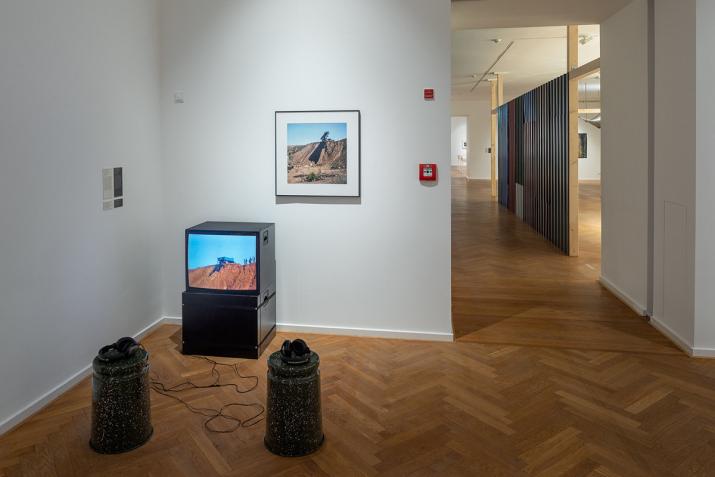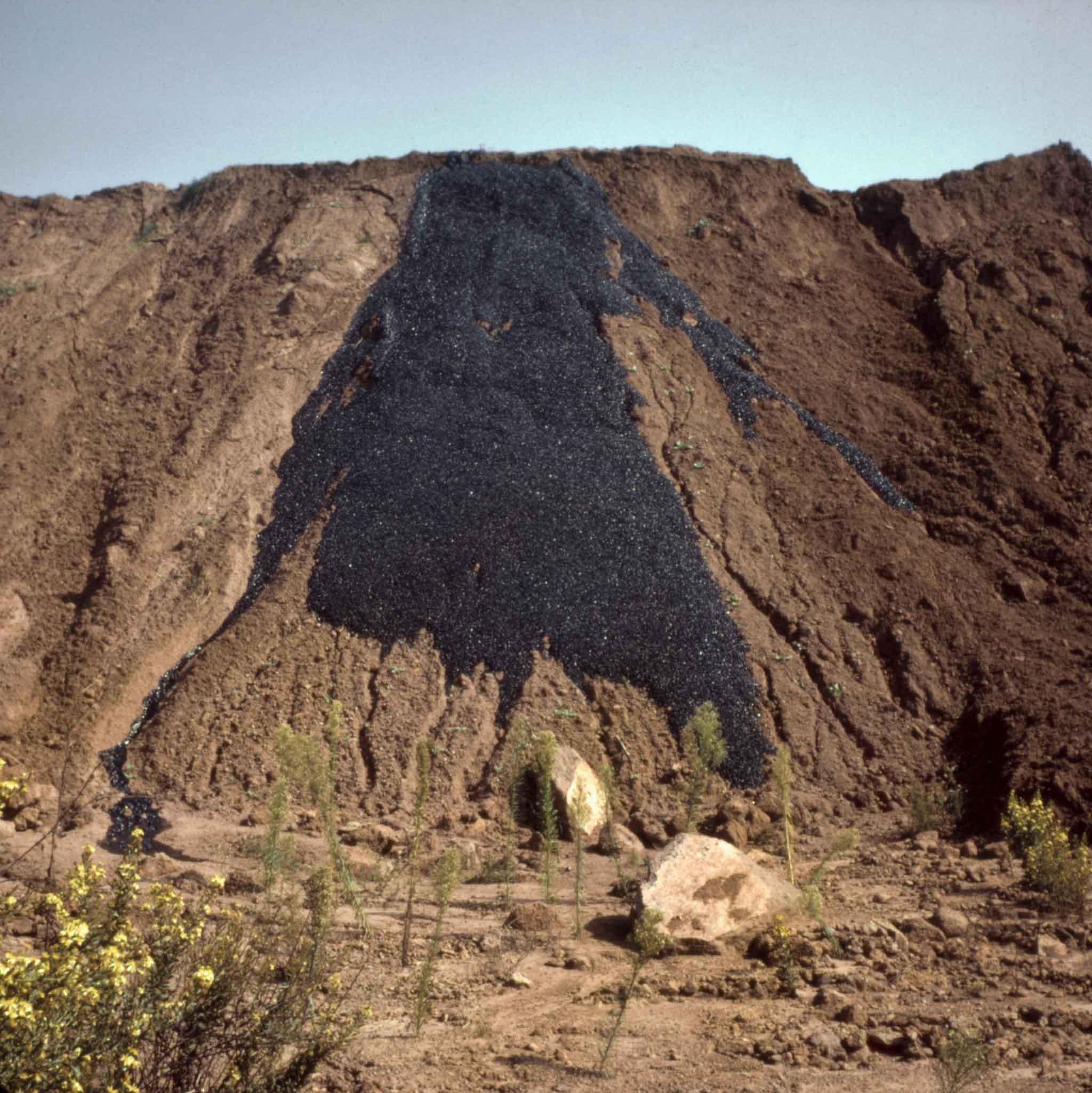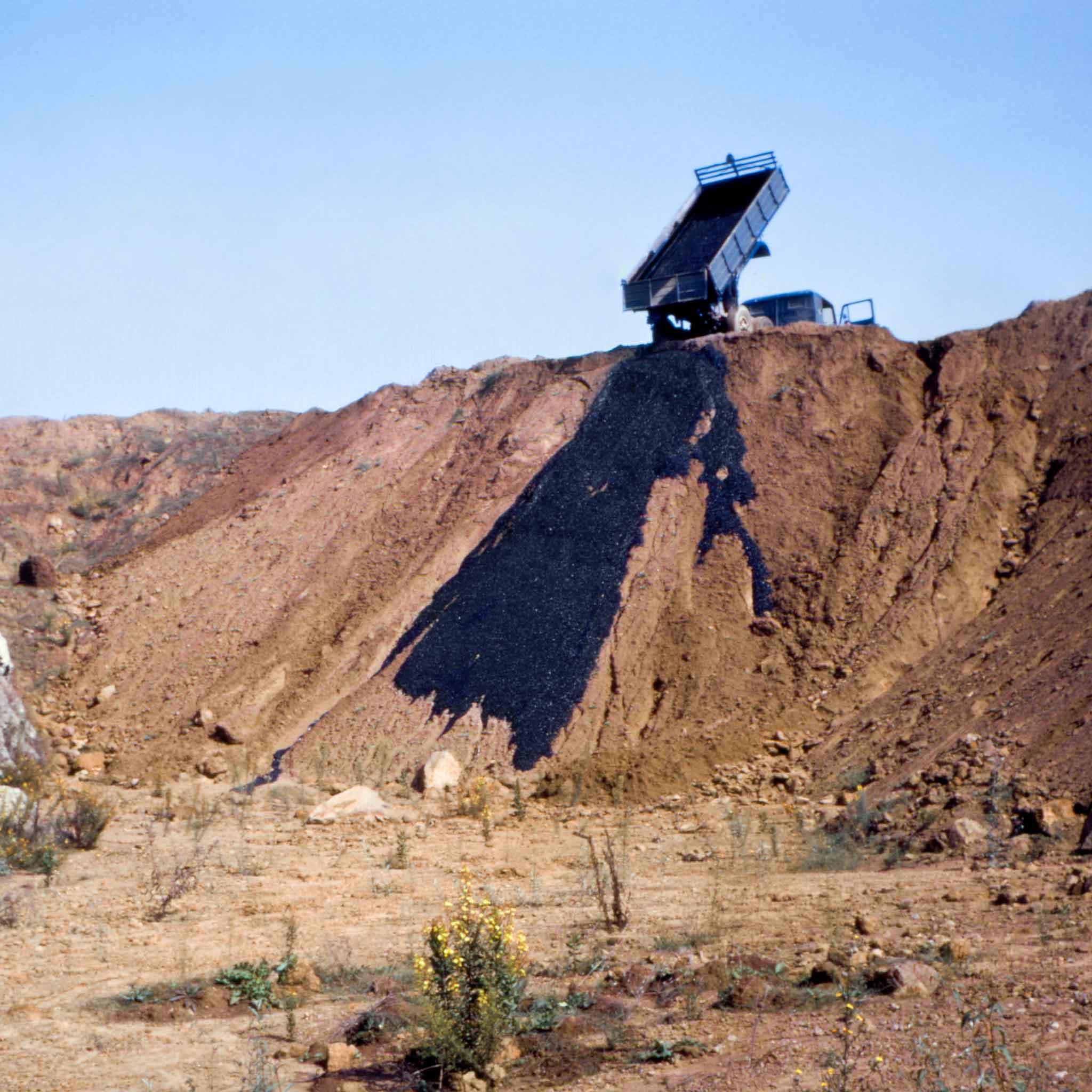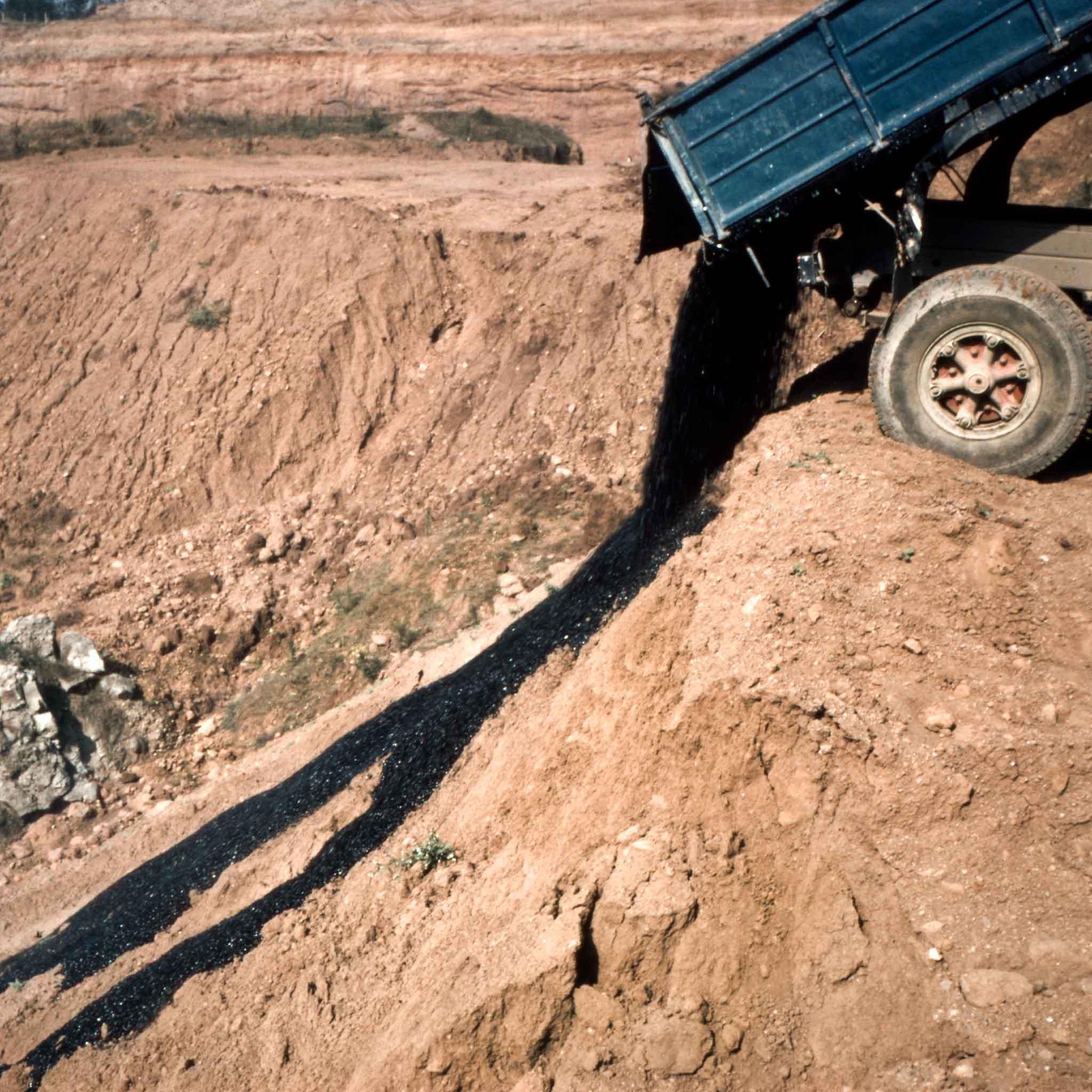In 1969 and 1970, Robert Smithson created three “pour” sculptures that demonstrated his mastery of a difficult and deadly medium: entropy. In all three, an industrial material was prepared and poured downhill at a remote or neglected site and left to solidify. The first of these sculptures, Asphalt Rundown, was a dramatic release of hot, viscous black material down the shorn crags of the defunct quarry, intended—and perceived—as a “powerful, annihilating gesture,” in the words of Frank Stella.
But an “annihilating gesture” seems uncharacteristic of Smithson, whose neatly sorted rock sculptures have a removed, scientific quality. In Asphalt Rundown, Smithson was working with hotter materials. As a younger man he had tussled with religion and politics like any other, writing in 1961 that “any effort to regain iconography from the total tangle of Sacred and Profane must create wrath that propels the suppliant artist down the rabbit hole into Desolation, where All is spilled, and spoiled below belief.”
(Emphasis his.)
Asphalt Rundown is not Smithson’s first or only attempt to shimmy down the rabbit hole, but it offers a unique cross-section of the strata of his thought.
WRATH
“For a fire will be kindled by my wrath,
one that burns down to the realm of the dead below.
It will devour the earth and its harvests
and set afire the foundations of the mountains.”
Deuteronomy 32:22
Early in his career Smithson made explicitly religious collages and paintings, citing inspiration from the art and writing of early Christian mysticism. His mature work jettisoned overt religious iconography, but continued to explore concepts of vision, timelessness, and humankind’s struggle to manage God’s volatile Nature. As an artist, he welcomed confrontation with immense and violent forces.
Some have suggested that the pour sculptures may be a reference to—if not a critique of—oil spills, images of which had begun to circulate in the late sixties, but to Smithson, openly political displays of environmental devastation with no “evidence of any harmony”
were not truly art. Rather than an oil spill or a landslide, Asphalt Rundown more closely resembles a volcanic eruption. Lava fascinated Smithson throughout his life. “It’s like building a volcano out of my mental experience,” he says of Island of Broken Glass, a later work too potentially destructive to realize. “The fact that somebody will swim out there and impale himself on that glass is not my fault. [...] I think all art is both mentally and physically dangerous."
Asphalt Rundown also points towards the levelheaded violence of industry, echoing the pouring of asphalt into the roads that cut across America and the world. In the Bible, God’s wrath and subsequent punishment is righteous and necessary, no matter how destructive. The fire that he sends down the mountains forges a path that, like asphalt, never completely cools. So too industry—always in the name of the people but never truly in their service—dissects and reengineers the landscape.
DESOLATION
In Smithson’s formulation, what distinguishes Asphalt Rundown from the other pours is that “there is a lot of distance [...] in other words, the lava was shipped East, there again you have that aspect of transport.”
Asphalt Rundown took place at an abandoned quarry about fifteen miles south of Rome, in an industrial suburb typical for Smithson. The location was decided in conjunction with Galleria L’Attico, which exhibited photographs and video of the sculptural event.
Quarries in the south of Rome mine the lava plateau formed in the Pleistocene by the Colli Albani volcanic complex. In the years since Asphalt Rundown, the area has been carefully transformed into a nature preserve. Coincidentally or not, these quarries were mined for bitumen (a primary component of asphalt, and the reason for its color) as well as cahnite, a colorless calcium crystal most commonly found at the Franklin Quarry in New Jersey,
an important site for Smithson.
In 1961, at age 23, Smithson had traveled to Rome for his second solo show, his international debut, at Galleria George Lester. In Rome he experienced a religious and artistic crisis, writing his gallerist to say that in his art, “Divine Suffering has taken the place of Nature.”
Perhaps he remembered this eight years later, when he traveled to Rome again to execute his first large-scale outdoor sculpture, an echo of the volcano visible in the eastern skyline.
ANNIHILATION
By the early 70s, Smithson began to conceive of the earth artist as a negotiator between the ecologist and the industrialist, and earth art as a resource that could illuminate “nature and necessity in consort.”
Ecology and industry, in the Smithsonian metaphor, are “two irreconcilable situations hopelessly going over the same waterfall.”
Always critical of the enclaved art world, he suggested that mining and manufacturing companies should employ “artist-consultants,” in order to protect natural landscapes and to shift the financial support of art away from galleries, auction houses, and museums.
This complex but unyielding pessimism allowed Smithson to look forward, past humankind’s struggle with nature and past the end of nature itself, to what Jennifer Roberts calls “an entropic endtime.”
Works like Spiral Jetty and the mirror sculptures seem to belong there, past the horizon. In contrast, Asphalt Rundown was eclipsed—overgrown—not long after its creation. Recent explorations of the site depict a grassy shelf dotted by manmade structures.
“Ruins in reverse”—industrial tracts constructed along the Via Laurentina, an ancient and sacred Roman road, a pioneering earthwork, gone to seed like an abandoned garden project. Millennia of human achievement caught in the process of rewilding.
ALL IS SPILLED
The great tragedy of Smithson’s death is that he did not get to see how time acted upon his work, both his completed sculptures and his many plans for more. As a relatively young man, he was able not just to visualize, but to depict time-beyond-time, when volcanic eruptions every few thousand years constitute the entirety of a location’s history. Had he witnessed the environmental devastation of the latter part of the twentieth century firsthand, would he still be able to see past the end of the world?
What could he have meant by “All is spilled, and spoiled below belief”? The last two words appended in pencil and underlined. “Beyond belief” would be expected, but for Smithson, desolation, the rabbit hole, the site of ruination was far from beyond belief. In fact, we have all been there without thinking of it much, often near train tracks. This is where Smithson thought the artist had to go to find something to depict; everything else had moral value and could not be seen for what it was.
On this particular excursion down the rabbit hole, he returned to the surface with Asphalt Rundown, a work of art at once abstract and figurative, a landscape painting in the most literal sense.
Selected Bibliography
Behncke, Boris. “Colli Albani or Alban Hills Volcanic Complex, Latium, Italy.” Italy’s Volcanoes, August 8, 2003. Accessed June 28, 2022. https://www.italysvolcanoes.com/ALBANI.html.
Flam, Jack, ed. Robert Smithson: The Collected Writings. Berkeley: University of California Press, 1996.
L’agro romano e la riserva di Decima Malafede. “Il tarabusino ha nidificato nell’ex Cava Nenni sulla Laurentina (The bittern nested in the former Cava Nenni on the Laurentina),” September 18, 2017. Accessed June 15, 2022. https://riservadecima-malafede.blogspot.com/.
mindat.org. “Vallerano Quarries.” Accessed June 20, 2022. https://www.mindat.org/loc-25465.html#.
Roberts, Jennifer L. Mirror-Travels: Robert Smithson and History. New Haven: Yale University Press, 2004.
Romano Impero. “Via Laurentina,” May 1, 2019. Accessed June 15, 2022. https://www.romanoimpero.com/2019/05/via-laurentina.html.
About the Author
Serena Solin is a poet in Maspeth, New York. She is Production Manager at Ugly Duckling Presse and a Managing Editor of the literary magazine Nat. Brut and edits an anthology series called Annotations. Her poems have appeared in Cutbank, FENCE, Sixth Finch, and elsewhere. You can find more of her work at serenasol.in.




